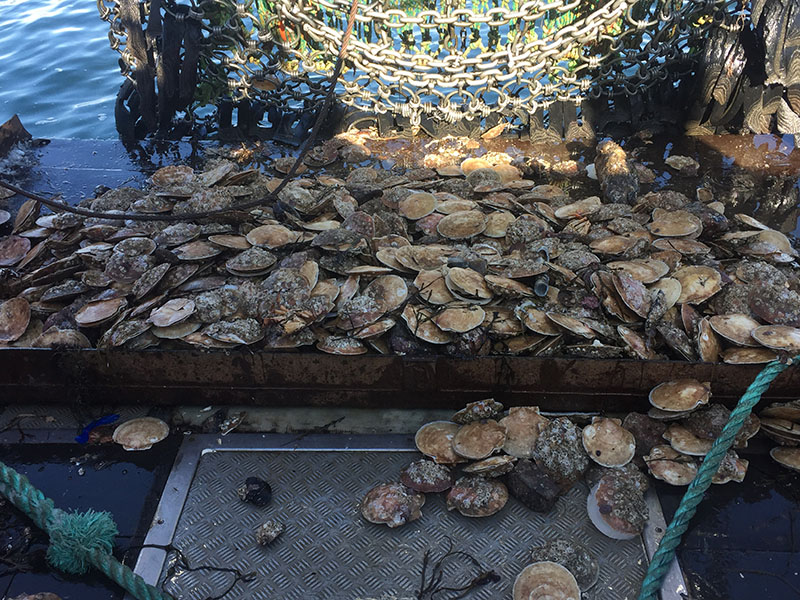The valuable 13-month Atlantic sea scallop 2018 fishing year wrapped up on March 31, with prices strong for final landings. While final data is not yet available, preliminary NOAA estimates for fishing year 2018 show 60.1 million pounds landed.
“This is 107 percent of the projected landings for fishing year 2018, but that does not represent an overage of any type,” said Travis Ford, NOAA’s sea scallops fishery manager.
“At the beginning of the year, the price took a bit of a dive because of the influx of product, but ended up leveling out later in the year,” said Ford.
Factors like the 2018 Omnibus Habitat Amendment, which reopened some closed areas, were partly responsible for 2018’s high landings. 2019 specifications are similar to 2018. In New Bedford, Mass., recent ex-vessel prices for 10-20s have fluctuated in the $9 per pound range. By late March, New Bedford fleets had hauled about 2.3 million pounds.
In Maine, a small but lucrative industry is dominated by draggers and some hand-harvesters. In 2018, state fishermen harvested about 563,000 pounds of meat, down from more than 802,000 pounds in the record harvest of 2017.
Melissa Smith, scallop resource manager at Maine Department of Marine Resources said variable seasonal landings are common: “The rotational areas that open in any given season are ecologically unique; some areas are known to produce more biomass.”
Smith added that Maine’s cold and windy winter affected the harvest.
“Additionally, as the resource spreads out, it requires fair weather to harvest in deeper waters further from shore,” she said.
Maine’s DMR imposed emergency closures in some areas under the state’s rotational area fishery management plan.
The total value of Maine’s fishery in 2018 was around $5.94 million, with an average of $10.54 per pound, as reported by dealers. At J’s Oyster restaurant, situated on Portland, Maine’s working waterfront, a raw scallop cocktail plate of six raw scallops cost $11-12, while skewers (3 to 4 pieces) went for $10.50.







